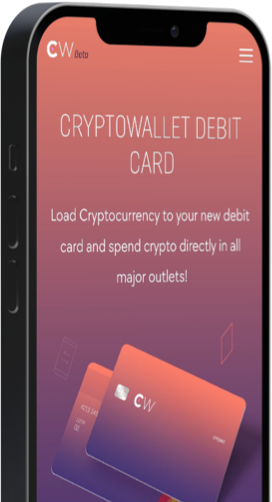Blockchain Bridges: What Are They & How Do They Work?

Blockchains continue to evolve in terms of architecture and scaling capabilities. As the number of blockchain networks increases, so does the demand for blockchains to become interoperable. In this guide, we will explore what blockchain bridges are and how they work.
What Is a Blockchain Bridge?
A blockchain bridge is a protocol that aims to enable communication between different blockchain ecosystems through the transfer of data and assets.
Blockchain bridges are meant to address the problem of blockchains operating in silos, thus being unable to communicate with one another. Remember, each blockchain has its own set of rules, protocols, tokens, and smart contracts and therefore is not natively interoperable.
This means you can’t use bitcoin (BTC) on the Ethereum network or ether (ETH) on the Bitcoin network directly. For instance, if you plan to pay for an item using bitcoin, but the recipient only accepts ether, then you are unable to process the payment efficiently because you can’t send bitcoin directly to the recipient. To transact, you will have to acquire ether or exchange a portion of your BTC for some ETH.
The solution to making blockchain interoperable is cross-chain bridges.
Blockchain bridges enable cross-chain transfers and give you access to other chains. Blockchain bridges also allow developers from different blockchain communities to collaborate. For example, to build decentralized cross-chain applications.

 Sign up today
Sign up today
How Do Blockchain Bridges Work?
The most popular use case for blockchain bridges is token transfers. This can be achieved by bridging a digital asset to make it compatible with a different blockchain network. This asset is then replicated on the new blockchain but still mirrors the price activity of the original.
For example, you can use a blockchain bridge to make one bitcoin compatible with an Ethereum wallet. The blockchain bridge will lock your BTC in a contract on Bitcoin’s mainchain and mint an equivalent of wrapped BTC (WBTC). Wrapped BTC is a tokenized version of bitcoin that is ERC20 compatible. Wrapped BTC is pegged to the value of bitcoin and can be unwrapped to get an equivalent value of BTC at any point.
Blockchain bridges allow you to port digital assets by locking (sometimes also burning) them into a smart contract and then issuing the equivalent tokens on the destinated blockchain.
Blockchain bridges can also connect a parent blockchain to its child sidechain, enabling interoperability between both chains. This can arise when the blockchain and its sidechain have different consensus mechanisms.
Types of Cross-Chain Bridges
While blockchain bridges may have several types of designs, they generally fall into two categories; trusted and trust-minimized bridges.
Trusted Bridges
Trusted bridges are essentially custodial platforms that rely on counterparties to validate transactions while acting as custodians of bridged assets. Trusted bridges depend on a central entity to operate, and users have to place their trust in them, basing the judgment on their reputation. For example, in the case of WBTC, bitcoin is wrapped on Ethereum while the BTC is held in custody with BitGo.
However, trusted bridges are exposed to the risk of being a single point of failure. Should the central entity become bankrupt, suffer theft or face any other turmoils, then the digital assets in custody may be at risk.
One example would be the Ronin Bridge Protocol exploit, where hackers were able to exploit a vulnerability in its system to steal over $600 million in ETH and USDC. Such hacks just go to show some of the inherent risks of trusted bridges.
Trust-Minimized Bridges
Trust-minimized bridges, on the other hand, are non-custodial bridges that rely on smart contracts, algorithms, and economic incentives to safely store cryptoassets. The use of smart contracts leaves you in control of all your locked crypto. However, the security of trust-minimized bridges is as good as its underlying code and incentive structure. Nexus or Gravity are examples of trust-minimized bridges.
Many blockchain bridges adopt models that fall between these two approaches. After all, each bridge has its nuances and trade-offs.
Popular Blockchain Bridges
Let’s take a look at some of the most popular blockchain bridges in the market.
Binance Bridge
Binance Bridge is a cross-chain bridging service that enables you to convert select cryptoassets into wrapped tokens to be used on BNB Smart Chain. The trusted bridge aims to improve the interoperability of different blockchains and bring assets like BTC, LTC, ETH, LINK, ATOM, DOT, and more to the BNB Chain ecosystem.
Avalanche Bridge
Avalanche Bridge supports the transfer of ERC20 assets from Ethereum to the Avalanche chain and vice-versa. The trusted bridge processes Ethereum transactions between 10-15 minutes and a few seconds for Avalanche transactions. All transaction fees have to be paid in AVAX.
Horizon Bridge
Horizon Bridge is a cross-chain bridge that supports the transfer of digital assets between Ethereum, BNB Smart Chain, and Harmony. If you are holding Ethereum-based assets, you can exchange them for corresponding assets on the Harmony network in a 1:1 ratio. The same applies to BNB Smart Chain assets. Horizon also allows you to redeem the exchanged assets back to Ethereum or BNB Smart Chain assets.
Polygon Bridge
Polygon Bridge is a cross-chain communication channel between Polygon and Ethereum. The bridge enables you to transfer ERC20 tokens and NFTs to the Polygon sidechain through its twin bridges, namely, the Polygon (PoS) bridge and the Plasma bridge. The former supports the transfer of ETH and most ERC20 tokens, and the latter supports the transfer of Polygon’s native token MATIC, and certain ERC20 and ERC721 tokens.
Wormhole
Wormhole is a bridge that allows cross-bridge transactions between Solana and Ethereum. According to its site, Wormhole is described as “.., a generic message passing protocol that connects to multiple chains including Ethereum, Solana, Terra, BNB Smart Chain, Polygon, Avalanche, Oasis, Fantom, Karura, Celo, Acala, Aurora, and Klaytn.” Wormhole works by facilitating the cross-chain transfer of data and assets by verifying them through a network of nodes before submitting them to destined blockchain networks.
Are Blockchain Bridges Safe?
No one can deny that an interoperable blockchain space is important for the development of this industry. However, blockchain bridges are not without risks. The centralized aspect of trusted bridges represents a fundamental risk, as we observed in the Ronin Bridge protocol hack.
Trust-minimized bridges can also expose you to risk if there is a flaw in the underlying code, as was the case in the Wormhole hack that resulted in the theft of over $300 million this year.
While both trusted and trust-minimized bridges have their strengths in capabilities, and potential flaws in the design, you can minimize the potential risks when using blockchain bridges.
You need to carry out due diligence before interacting with any bridging protocol. This involves checking the documentation, inspecting the code, and assessing the maturity of the protocol. These steps are necessary for you to safeguard your assets as developers work to address the current limitations of blockchain bridges.
FAQs
What Does It Mean to Bridge Tokens?
To bridge refers to transferring tokens from one blockchain to another using a cross-chain bridge that enables blockchain interoperability.
What Are ETH Bridges?
Ethereum bridges provide a way to transfer assets to EVM-compatible networks like BNB Smart Chain, Fantom, and Avalanche.
What is a DeFi Bridge?
DeFi bridges are protocols that enable the bridging of DeFi assets among different smart contract-enabled blockchains. Some also refer to DeFi bridges to explain protocols that allow for the creation of synthetic derivatives that represent an asset from another blockchain.













